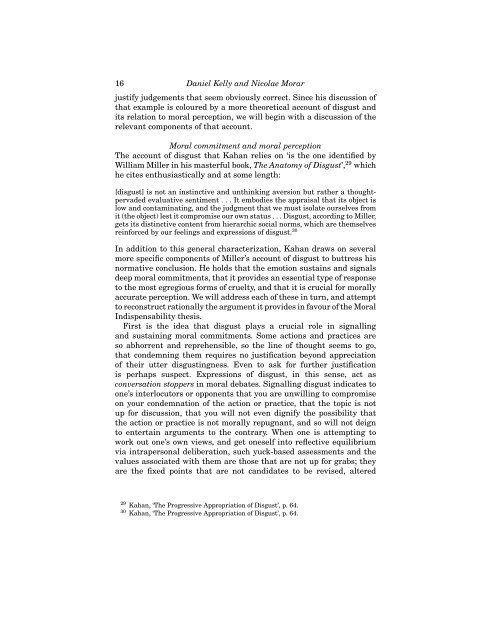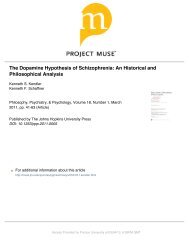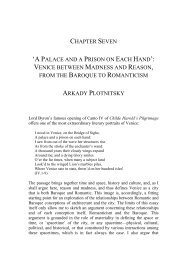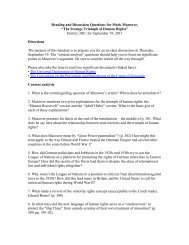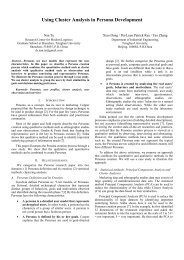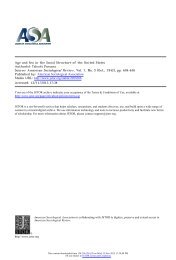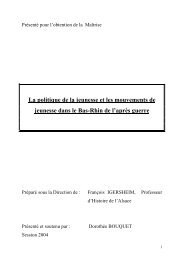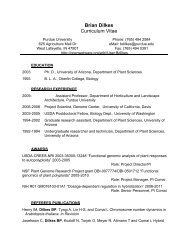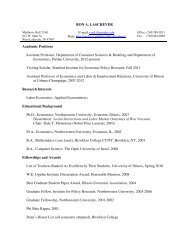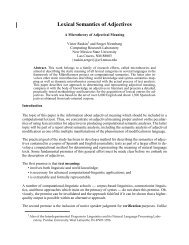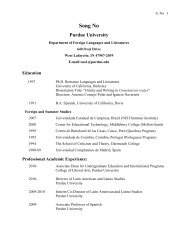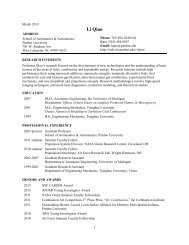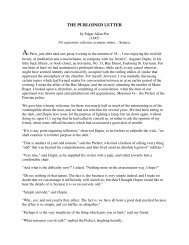Against the Yuck Factor - Career Account Web Pages - Purdue ...
Against the Yuck Factor - Career Account Web Pages - Purdue ...
Against the Yuck Factor - Career Account Web Pages - Purdue ...
You also want an ePaper? Increase the reach of your titles
YUMPU automatically turns print PDFs into web optimized ePapers that Google loves.
16 Daniel Kelly and Nicolae Morar<br />
justify judgements that seem obviously correct. Since his discussion of<br />
that example is coloured by a more <strong>the</strong>oretical account of disgust and<br />
its relation to moral perception, we will begin with a discussion of <strong>the</strong><br />
relevant components of that account.<br />
Moral commitment and moral perception<br />
The account of disgust that Kahan relies on ‘is <strong>the</strong> one identified by<br />
William Miller in his masterful book, The Anatomy of Disgust’, 29 which<br />
he cites enthusiastically and at some length:<br />
[disgust] is not an instinctive and unthinking aversion but ra<strong>the</strong>r a thoughtpervaded<br />
evaluative sentiment . . . It embodies <strong>the</strong> appraisal that its object is<br />
low and contaminating, and <strong>the</strong> judgment that we must isolate ourselves from<br />
it (<strong>the</strong> object) lest it compromise our own status . . . Disgust, according to Miller,<br />
gets its distinctive content from hierarchic social norms, which are <strong>the</strong>mselves<br />
reinforced by our feelings and expressions of disgust. 30<br />
In addition to this general characterization, Kahan draws on several<br />
more specific components of Miller’s account of disgust to buttress his<br />
normative conclusion. He holds that <strong>the</strong> emotion sustains and signals<br />
deep moral commitments, that it provides an essential type of response<br />
to <strong>the</strong> most egregious forms of cruelty, and that it is crucial for morally<br />
accurate perception. We will address each of <strong>the</strong>se in turn, and attempt<br />
to reconstruct rationally <strong>the</strong> argument it provides in favour of <strong>the</strong> Moral<br />
Indispensability <strong>the</strong>sis.<br />
First is <strong>the</strong> idea that disgust plays a crucial role in signalling<br />
and sustaining moral commitments. Some actions and practices are<br />
so abhorrent and reprehensible, so <strong>the</strong> line of thought seems to go,<br />
that condemning <strong>the</strong>m requires no justification beyond appreciation<br />
of <strong>the</strong>ir utter disgustingness. Even to ask for fur<strong>the</strong>r justification<br />
is perhaps suspect. Expressions of disgust, in this sense, act as<br />
conversation stoppers in moral debates. Signalling disgust indicates to<br />
one’s interlocutors or opponents that you are unwilling to compromise<br />
on your condemnation of <strong>the</strong> action or practice, that <strong>the</strong> topic is not<br />
up for discussion, that you will not even dignify <strong>the</strong> possibility that<br />
<strong>the</strong> action or practice is not morally repugnant, and so will not deign<br />
to entertain arguments to <strong>the</strong> contrary. When one is attempting to<br />
work out one’s own views, and get oneself into reflective equilibrium<br />
via intrapersonal deliberation, such yuck-based assessments and <strong>the</strong><br />
values associated with <strong>the</strong>m are those that are not up for grabs; <strong>the</strong>y<br />
are <strong>the</strong> fixed points that are not candidates to be revised, altered<br />
29 Kahan, ‘The Progressive Appropriation of Disgust’, p. 64.<br />
30 Kahan, ‘The Progressive Appropriation of Disgust’, p. 64.


